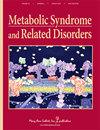Effect of Real-Time Continuous Glucose Monitoring Versus Flash Glucose Monitoring on Glycemic Control in Adults with Type 1 Diabetes Mellitus: A Systematic Review and Meta-Analysis.
IF 1.7
4区 医学
Q4 MEDICINE, RESEARCH & EXPERIMENTAL
引用次数: 0
Abstract
Objective: This meta-analysis aimed to compare the effect of the real-time continuous glucose monitoring (rt-CGM) and flash glucose monitoring (FGM) on glycemic control in adults with type 1 diabetes mellitus (T1DM). Methods: A systematic literature search of all relevant studies comparing the clinical effectiveness of rt-CGM and FGM in adults with T1DM on Cochrane Library, PubMed, Embase, Web of Science, and Scopus from January 2015 to June 2023 was performed. The primary endpoints were glycated hemoglobin (HbA1c) and TIR (time in range). Secondary endpoints included time below range [TBR (<3.9 mmol/L) and (<3.0 mmol/L)], time above range [TAR (>10.0 mmol/L) and (>13.9 mmol/L)], mean glucose, and glycemic variability (GV) [standard deviations (SD) and coefficient of variation (CV)]. Results: Six studies with 1516 TIDM patients, including three randomized controlled trials and three observational studies, were enrolled in this meta-analysis. Compared to FGM, rt-CGM led to greater glycemic control, represented by higher TIR (%, 3.9 ∼ 10 mmol/L) (SMD = 0.59, 95%CI: 0.37 ∼ 0.81, p < 0.001), decreased TBR (%, <3.9 mmol/L) (SMD = -1.45, 95%CI: -2.33 ∼ -0.57, p = 0.001), decreased TAR [(%, >10.0 mmol/L) (SMD = -0.38, 95%CI: -0.71 ∼ -0.04, p = 0.03) and (%, >13.9 mmol/L) (SMD = -0.42, 95%CI: -0.79 ∼ -0.04, p = 0.03), respectively], lower mean glucose (SMD = -0.18, 95%CI: -0.31 ∼ -0.06, p = 0.003), decreased SD (SMD = -0.70, 95%CI: -1.09 ∼ -0.31, p < 0.001), and decreased CV (SMD = -0.76, 95%CI: -1.05 ∼ -0.47, p < 0.001). However, there was no difference in lowering HbA1c and TBR (%, <3.0 mmol/L) between groups. Conclusion: The rt-CGM outperformed FGM in improving several key CGM metrics among adults with T1DM, but there is no significant difference in HbA1c and TBR (<3.0 mmol/L).实时连续葡萄糖监测与闪存葡萄糖监测对 1 型糖尿病成人血糖控制的影响:系统回顾与元分析》。
目的:本荟萃分析旨在比较实时连续血糖监测(rt-CGM)和闪光血糖监测(FGM)对 1 型糖尿病(T1DM)成人患者血糖控制的影响。研究方法对 2015 年 1 月至 2023 年 6 月期间在 Cochrane Library、PubMed、Embase、Web of Science 和 Scopus 上比较 rt-CGM 和 FGM 对成年 T1DM 患者临床疗效的所有相关研究进行了系统性文献检索。主要终点是糖化血红蛋白(HbA1c)和TIR(在范围内的时间)。次要终点包括低于范围时间[TBR(10.0 mmol/L)和(>13.9 mmol/L)]、平均血糖和血糖变异性(GV)[标准差(SD)和变异系数(CV)]。结果:本次荟萃分析共纳入了六项研究,共 1516 名 TIDM 患者,其中包括三项随机对照试验和三项观察性研究。与 FGM 相比,rt-CGM 能更好地控制血糖,表现为更高的 TIR(%,3.9 ∼ 10 mmol/L)(SMD = 0.59,95%CI:0.37 ∼ 0.81,p < 0.001),TBR 下降(%,10.0 mmol/L)(SMD = -0.38,95%CI:-0.71 ∼ -0.04,p = 0.03)和(%,>13.9 mmol/L)(SMD = -0.42,95%CI:-0.79 ∼ -0.04,p = 0.03)],降低平均血糖(SMD = -0.18,95%CI:-0.31 ∼ -0.06,p = 0.003),降低 SD(SMD = -0.70,95%CI:-1.09 ∼ -0.31,p < 0.001),降低 CV(SMD = -0.76,95%CI:-1.05 ∼ -0.47,p < 0.001)。然而,在降低 HbA1c 和 TBR(%,<3.0 mmol/L)方面,组间没有差异。结论rt-CGM在改善T1DM成人患者的几项关键CGM指标方面优于FGM,但在HbA1c和TBR(<3.0 mmol/L)方面没有显著差异。
本文章由计算机程序翻译,如有差异,请以英文原文为准。
求助全文
约1分钟内获得全文
求助全文
来源期刊

Metabolic syndrome and related disorders
MEDICINE, RESEARCH & EXPERIMENTAL-
CiteScore
3.40
自引率
0.00%
发文量
74
审稿时长
6-12 weeks
期刊介绍:
Metabolic Syndrome and Related Disorders is the only peer-reviewed journal focusing solely on the pathophysiology, recognition, and treatment of this major health condition. The Journal meets the imperative for comprehensive research, data, and commentary on metabolic disorder as a suspected precursor to a wide range of diseases, including type 2 diabetes, cardiovascular disease, stroke, cancer, polycystic ovary syndrome, gout, and asthma.
Metabolic Syndrome and Related Disorders coverage includes:
-Insulin resistance-
Central obesity-
Glucose intolerance-
Dyslipidemia with elevated triglycerides-
Low HDL-cholesterol-
Microalbuminuria-
Predominance of small dense LDL-cholesterol particles-
Hypertension-
Endothelial dysfunction-
Oxidative stress-
Inflammation-
Related disorders of polycystic ovarian syndrome, fatty liver disease (NASH), and gout
 求助内容:
求助内容: 应助结果提醒方式:
应助结果提醒方式:


